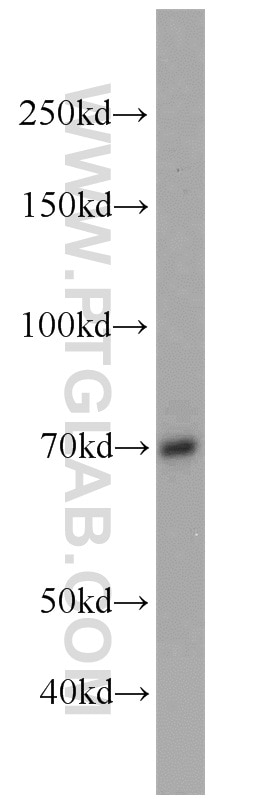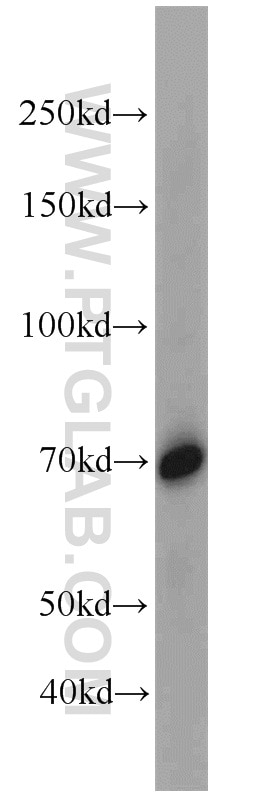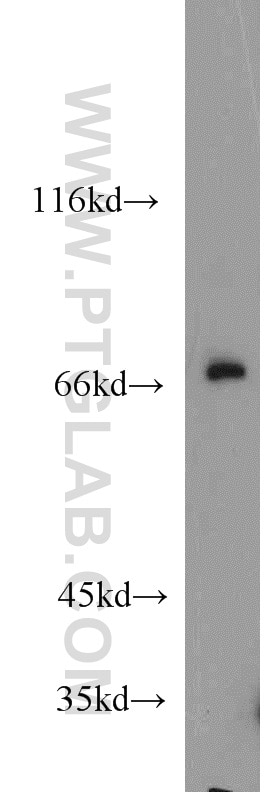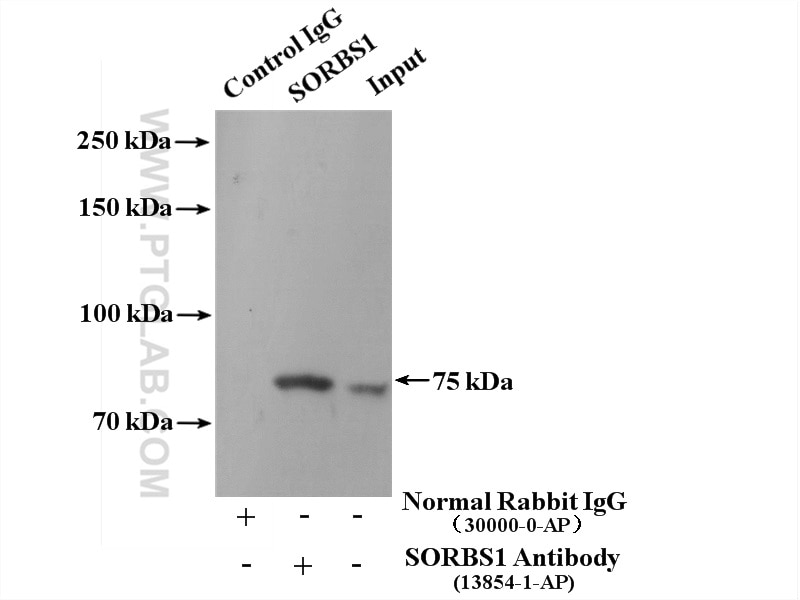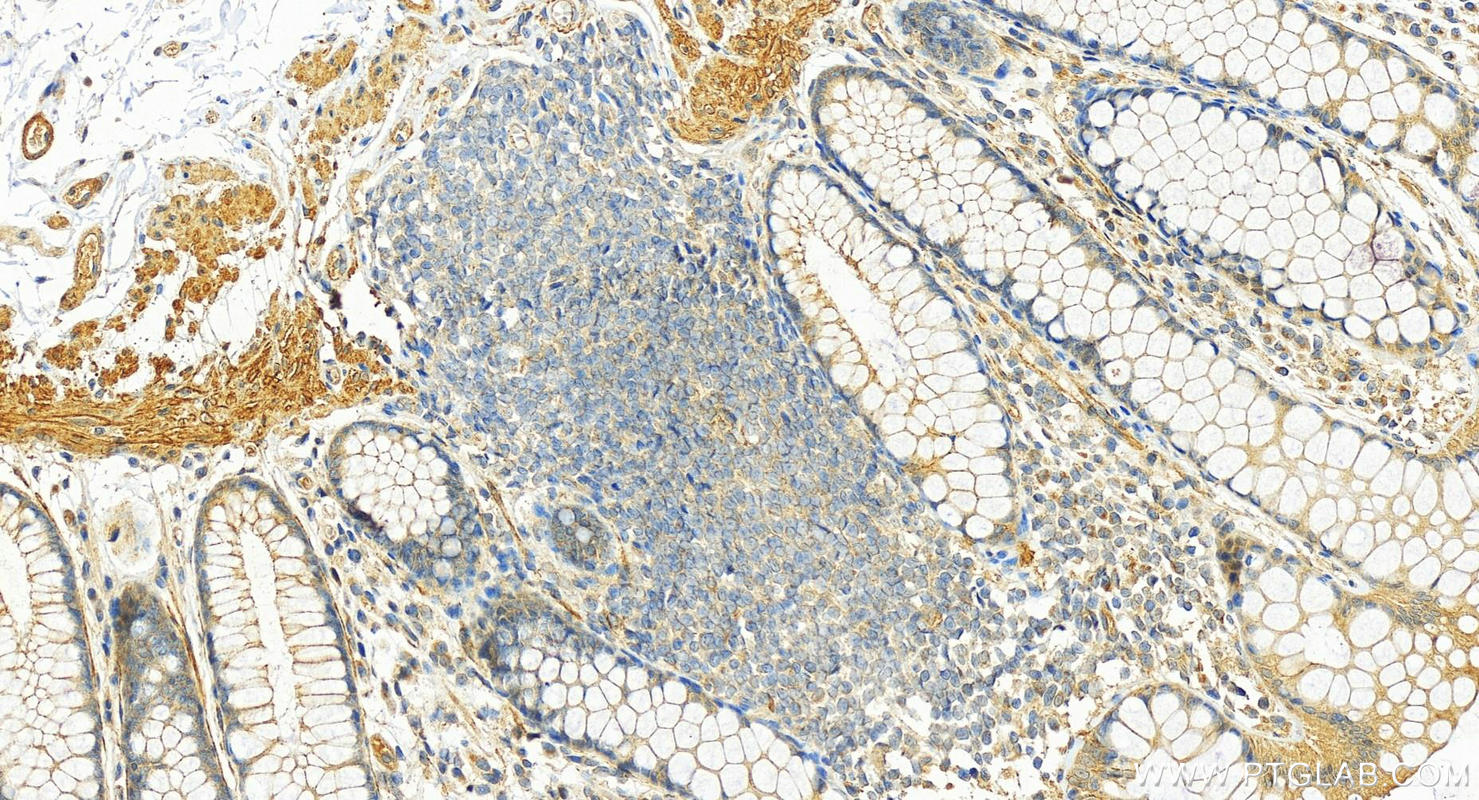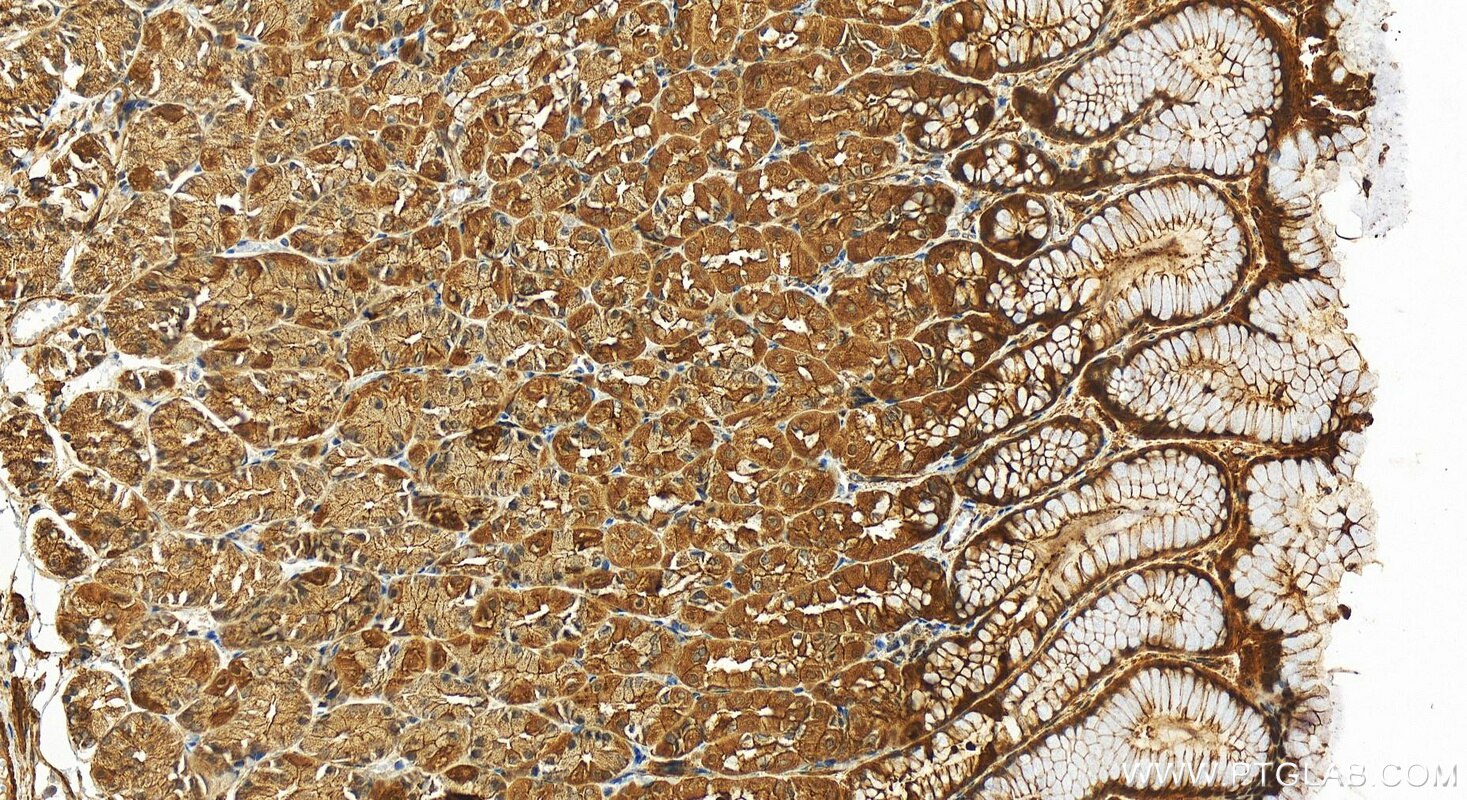Tested Applications
| Positive WB detected in | 3T3-L1 cells, HEK-293 cells, mouse kidney tissue, mouse liver tissue |
| Positive IP detected in | mouse liver tissue |
| Positive IHC detected in | human stomach tissue, human colon tissue Note: suggested antigen retrieval with TE buffer pH 9.0; (*) Alternatively, antigen retrieval may be performed with citrate buffer pH 6.0 |
Recommended dilution
| Application | Dilution |
|---|---|
| Western Blot (WB) | WB : 1:500-1:1000 |
| Immunoprecipitation (IP) | IP : 0.5-4.0 ug for 1.0-3.0 mg of total protein lysate |
| Immunohistochemistry (IHC) | IHC : 1:50-1:500 |
| It is recommended that this reagent should be titrated in each testing system to obtain optimal results. | |
| Sample-dependent, Check data in validation data gallery. | |
Published Applications
| KD/KO | See 1 publications below |
| WB | See 3 publications below |
| IHC | See 1 publications below |
| IF | See 2 publications below |
Product Information
13854-1-AP targets SORBS1 in WB, IHC, IF, IP, ELISA applications and shows reactivity with human, mouse samples.
| Tested Reactivity | human, mouse |
| Cited Reactivity | human, mouse, canine |
| Host / Isotype | Rabbit / IgG |
| Class | Polyclonal |
| Type | Antibody |
| Immunogen |
CatNo: Ag4828 Product name: Recombinant human SORBS1 protein Source: e coli.-derived, PGEX-4T Tag: GST Domain: 1-300 aa of BC042612 Sequence: MSSECDGGSKAVMNGLAPGSNGQDKDMDPTKICTGKGAVTLRASSSYRETPSSSPASPQETRQHESKPDEWRLSSSADANGNAQPSSLAAKGYRSVHPNLPSDKSQDATSSSAAQPEVIVVPLYLVNTDRGQEGTARPPTPLGPLGCVPTIPATASAASPLTFPTLDDFIPPHLQRWPHHSQPARASGSFAPISQTPPSFSPPPPLVPPAPEDLRRVSEPDLTGAVSSTDSSPLLNEVSSSLIGTDSQAFPSVSKPSSAYPSTTIVNPTIVLLQHNREQQKRLSSLSDPVSERRVGEQDS Predict reactive species |
| Full Name | sorbin and SH3 domain containing 1 |
| Calculated Molecular Weight | 1292 aa, 142 kDa |
| Observed Molecular Weight | 70-75 kDa |
| GenBank Accession Number | BC042612 |
| Gene Symbol | SORBS1 |
| Gene ID (NCBI) | 10580 |
| RRID | AB_11232224 |
| Conjugate | Unconjugated |
| Form | Liquid |
| Purification Method | Antigen affinity purification |
| UNIPROT ID | Q9BX66 |
| Storage Buffer | PBS with 0.02% sodium azide and 50% glycerol, pH 7.3. |
| Storage Conditions | Store at -20°C. Stable for one year after shipment. Aliquoting is unnecessary for -20oC storage. 20ul sizes contain 0.1% BSA. |
Background Information
The sorbin homology (SoHo) family of adapter and scaffold proteins consists of three proteins: CAP, also known as Sorbin and SH3 domain containing 1 (Sorbs1), ArgBP2, also known as Sorbs2, and Vinexin, also known as Sorbs3. All Sorbs proteins are highly expressed in heart tissue, skeletal muscle, adipose tissue, and cells of the immune system, functioning as SH3-domain-mediated adaptors of scaffolding molecules(PMID: 32738595). SORBS1 can bind to signaling molecules (e.g., c-Cbl, c-Abl, and insulin reporter) to regulate glucose transport, transcription activity, and insulin signaling(PMID: 27791200).
Protocols
| Product Specific Protocols | |
|---|---|
| IHC protocol for SORBS1 antibody 13854-1-AP | Download protocol |
| IP protocol for SORBS1 antibody 13854-1-AP | Download protocol |
| WB protocol for SORBS1 antibody 13854-1-AP | Download protocol |
| Standard Protocols | |
|---|---|
| Click here to view our Standard Protocols |
Publications
| Species | Application | Title |
|---|---|---|
Front Cell Dev Biol Long Non-coding RNAs LOC100126784 and POM121L9P Derived From Bone Marrow Mesenchymal Stem Cells Enhance Osteogenic Differentiation via the miR-503-5p/SORBS1 Axis.
| ||
Front Cell Neurosci Integrative Cell Type-Specific Multi-Omics Approaches Reveal Impaired Programs of Glial Cell Differentiation in Mouse Culture Models of DM1. | ||
PLoS One Sorbin and SH3 domain-containing protein 2 (SORBS2) is a component of the acto-myosin ring at the apical junctional complex in epithelial cells. | ||
Sci Rep STAP-2 facilitates insulin signaling through binding to CAP/c-Cbl and regulates adipocyte differentiation | ||
PLoS One Proteomic changes in the hippocampus of large mammals after total-body low dose radiation |


